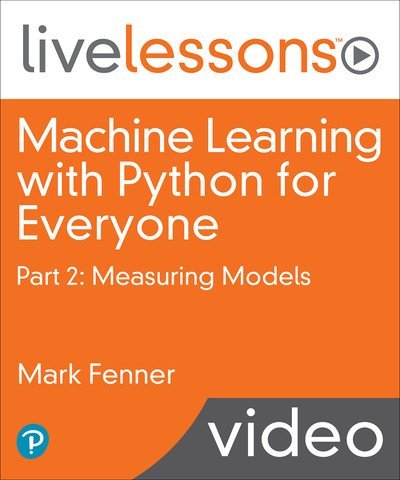
Duration: 5h 34m | Video: 1280×720 30fps | Audio: AAC, 48 kHz, 2ch | Size: 1.69 GB
Genre: eLearning | Language: English
Code-along sessions move you from introductory machine learning concepts to concrete code.
Overview
Machine learning is moving from futuristic AI projects to data analysis on your desk. You need to go beyond following along in discussions to coding machine learning tasks. These videos avoid heavy mathematics to focus on how to turn introductory machine learning concepts into concrete code using Python, scikit-learn, and friends.
You will learn about the fundamental metrics used to evaluate general learning systems and specific metrics used in classification and regression. You will learn techniques for getting the most informative learning performance measures out of your data. You will come away with a strong toolbox of numerical and graphical techniques to understand how your learning system will perform on novel data.
About the Instructor
Mark Fenner, PhD, has been teaching computing and mathematics to diverse adult audiences since 1999. His research projects have addressed design, implementation, and performance of machine learning and numerical algorithms, learning systems for security analysis of software repositories and intrusion detection, probabilistic models of protein function, and analysis and visualization of ecological and microscopy data. Mark continues to work across the data science spectrum from C, Fortran, and Python implementation to statistical analysis and visualization. He has delivered training and developed curriculum for Fortune 50 companies, boutique consultancies, and national-level research laboratories. Mark holds a Ph.D. in Computer Science and owns Fenner Training and Consulting, LLC.
Skill Level
Beginner to Intermediate
Learn How To
Recognize underfitting and overfitting with graphical plots.
Make use of resampling techniques like cross-validation to get the most out of your data.
Graphically evaluate the learning performance of learning systems
Compare production learners with baseline models over various classification metrics
Build and evaluate confusion matrices and ROC curves
Apply classification metrics to multi-class learning problems
Develop precision-recall and lift curves for classifiers
Compare production regression techniques with baseline regressors over various regression metrics
Construct residual plots for regressors
Who Should Take This Course
This course is a good fit for anyone that needs to improve their fundamental understanding of machine learning concepts and become familiar with basic machine learning code. You might be a newer data scientist, a data analyst transitioning to the use of machine learning models, a research and development scientist looking to add machine learning techniques to your classical statistical training, or a manager adding data science/machine learning capabilities to your team.
Course Requirements
Students should have a basic understanding of programming in Python (variables, basic control flow, simple scripts). They should also have familiarity with the vocabulary of machine learning (dataset, training set, test set, model), but knowledge about the concepts can be very shallow. They should have a working Python installation that allows you to use scikit-learn and matplotlib.
Password/解压密码www.tbtos.com
转载请注明:0daytown » Machine Learning with Python for Everyone, Part 2: Measuring Models